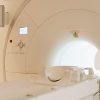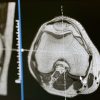$0.00
The Silent Hero: Ultrasound’s Role in Early Cancer Diagnosis
Cancer is a formidable adversary, affecting millions of lives each year. Early detection is often the key to successful treatment, and while cancer diagnosis typically involves various imaging and diagnostic methods, ultrasound stands out as a silent hero in the early detection of certain types of cancers. This article explores the crucial role of ultrasound studies in identifying and diagnosing cancer at an early, treatable stage.
Understanding the Power of Ultrasound:
Ultrasound, or sonography, is a non-invasive imaging technique that uses high-frequency sound waves to create real-time images of the body’s internal structures. It is a versatile tool used for various medical purposes, from monitoring fetal development during pregnancy to assessing the health of vital organs. However, one of its most valuable applications is in the early diagnosis of cancer.
Types of Cancers Detected by Ultrasound:
- Breast Cancer: Breast ultrasound plays a pivotal role in complementing mammography. It is particularly useful for evaluating suspicious breast lumps, characterizing abnormalities, and guiding breast biopsies.
- Thyroid Cancer: Ultrasound is the primary imaging method for assessing thyroid nodules. It helps distinguish between benign and malignant nodules and guides fine-needle aspiration (FNA) biopsies when necessary.
- Ovarian Cancer: Transvaginal ultrasound can be a valuable tool for assessing ovarian abnormalities, particularly in cases of suspected ovarian cancer. It aids in early detection and monitoring of ovarian tumors.
- Testicular Cancer: Testicular ultrasound is instrumental in evaluating testicular masses. It helps differentiate between benign conditions and testicular cancer, facilitating early diagnosis.
- Liver Cancer: Ultrasound can detect liver tumors, providing insight into their size, location, and characteristics. This information assists in the early diagnosis and staging of liver cancer.
Why Ultrasound is a Valuable Diagnostic Tool:
- Non-Invasive: Ultrasound is a non-invasive procedure that does not involve ionizing radiation. This makes it a safe and comfortable imaging option, suitable for repeated examinations when necessary.
- Real-Time Imaging: Ultrasound provides real-time imaging, allowing healthcare professionals to observe blood flow and tissue movement, which can aid in cancer diagnosis and assessment.
- Early Detection: Ultrasound can identify cancer at an earlier stage when it may be more treatable. Early detection often leads to better treatment outcomes and increased survival rates.
- Guidance for Biopsies: Ultrasound can guide the precise sampling of suspicious tissue through biopsies, ensuring accurate diagnoses and minimizing the need for invasive surgical procedures.
- Cost-Effective: Ultrasound is often a cost-effective imaging method, making it accessible for a wide range of patients and healthcare facilities.
The Importance of Multimodal Imaging:
While ultrasound is a valuable tool for the early diagnosis of cancer, it is often used in conjunction with other imaging modalities such as mammography, MRI, and CT scans. Multimodal imaging approaches provide a comprehensive view of the disease, enabling healthcare professionals to make more accurate diagnoses and treatment decisions.
In conclusion, ultrasound is an indispensable tool in the early diagnosis of certain types of cancers. Its non-invasive nature, real-time imaging capabilities, and cost-effectiveness make it a valuable asset in the fight against cancer. Regular screenings, especially for those at higher risk, can significantly improve the chances of early cancer detection, ultimately leading to more successful treatment outcomes and improved patient survival rates.
Recent Posts
Recent Comments
Join our newsletter
Get our emails for info on new items, sales and much more.
Register now to get latest updates on the newest parts!










